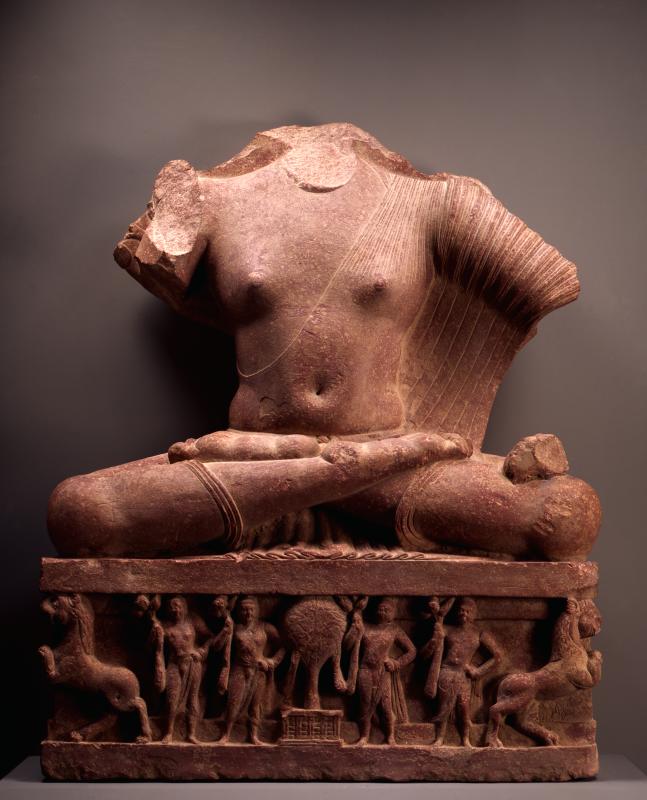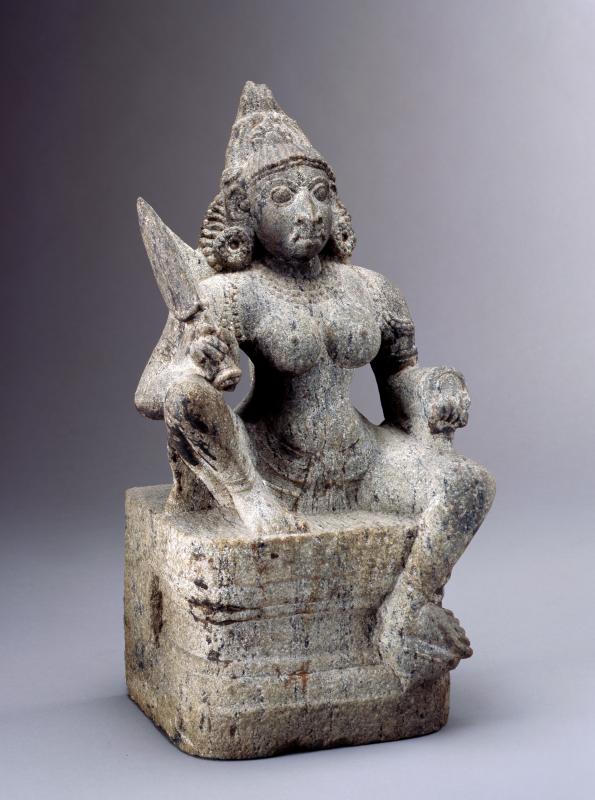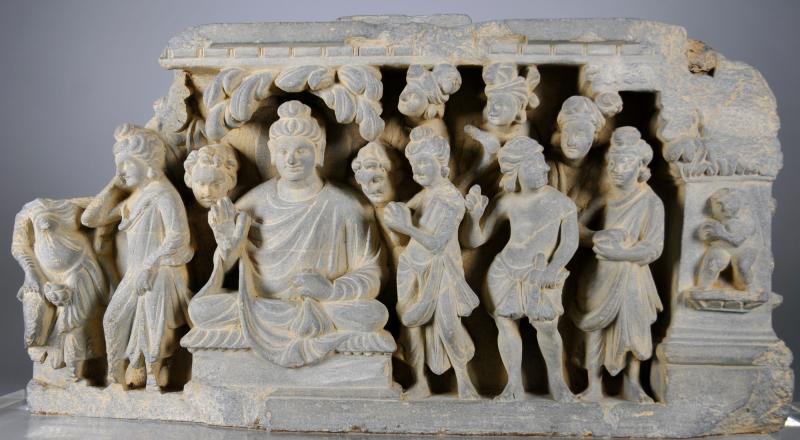The defining feature of each of the stones featured in this gallery is the influence of compressive forces in their formation. Whereas igneous rocks such as those common to the Americas require intense heat and pressure to form, the rocks of the Indian subcontinent are largely sedimentary or varying degrees of metamorphic. That is because the Indian subcontinent’s most active plate boundary is with the Eurasian Plate. When two continental plates collide, their relative buoyancy and low density prevents one plate from subducting beneath the other leading to less dramatic changes to the stone’s structure than subductive plate interactions which liquify the submerged rock, transforming it entirely.
Eriksson, P.G. “Sedimentation Through Time.” In The Precambrian Earth, edited by W. Alterman, D.R. Nelson, W.U. Mueller, and O. Catuneanu. Vol. 12. 1st ed. Developments in Precambrian Geology. Amsterdam: Elsevier, 2004.
This sculpture of the future Buddha is carved in the red sandstone commonly associated with the artistic production of Mathura in northern India. Sandstone is primarily composed of quartz grains with lesser amounts of mica and feldspar. The characteristic red color of this stone is the result of a hematite (iron oxide) coating on the individual sand grains that compose the stone. When mixed with clay, this same mineral forms the pigment ocher.

Red sandstone is typically formed under slightly different conditions than ordinary sandstone. While it is common for trace amounts of iron to be found in sandstones of all shades, the location where a deposited sediment undergoes lithification determines how the individual grains of sand become oxidized. Shallow marine environments that experience intermittent flooding such as the Vindhayan basin where this stone originates allow for the right mixture of oxygen required for the stone to change color and water to allow the pigment to be evenly distributed within the rock matrix. The region that produced this object remains a major exporter of red sandstone.
Bodhisattva Avalokiteshvara in the Form of Khasarpana Lokeshvara
The stone used in this object is a trademark of art produced in the Pāla Empire (750-1161) and finished objects composed of this material are found widely in a narrow band stretching nearly 800km along the Ganges river which flows through eastern India and Bangladesh. Known commonly in the museum and art community as black chlorite, this stone contains only trace amounts of chlorite minerals and is best described as a chloritoid phyllite.
While “black chlorite” remains a broad term to classify the dark stone used in Indian art, a 1998 study sampled over 200 objects classified as black chlorite in Indian museums and found they were more similar than initially thought. Most of the sampled objects were likely quarried from a single geologic source then traded throughout the Ganges River communities where the stone was then carved in local workshops. The researcher identified the source as a quarry near the settlement of Matadih in the Indian state of Bihar. The popularity of this material peaked in the Pāla Empire (750-1161) which oversaw a period of political stability which facilitated an increase in commercial activity and urbanization, allowing the material to be readily transported across the Ganges.

This goddess sculpture is carved from granite which is the most common intrusive igneous rock. It is coarse grained due to its slow rate of cooling. Composed of at least 65% silica and 20% quartz, granite is often mottled and light in color, a charactaristic shared by this statue.
Schist is a very broad class of metamorphic rocks. Their defining feature is that they exhibit schistosity, or the parallel alignment of thin mineral layers within a rock. It often results from compressive tectonic forces such as those produced when two continental plates collide.

This carved relief is from the Gandhara culture, which straddled what is today the mountainous border between Pakistan and Afghanistan. As the Indian subcontinent collided with the Eurasian Plate, the compressive forces created the schist used in this sculpture.
